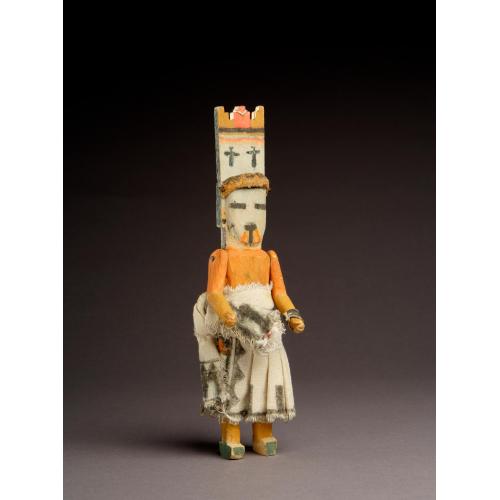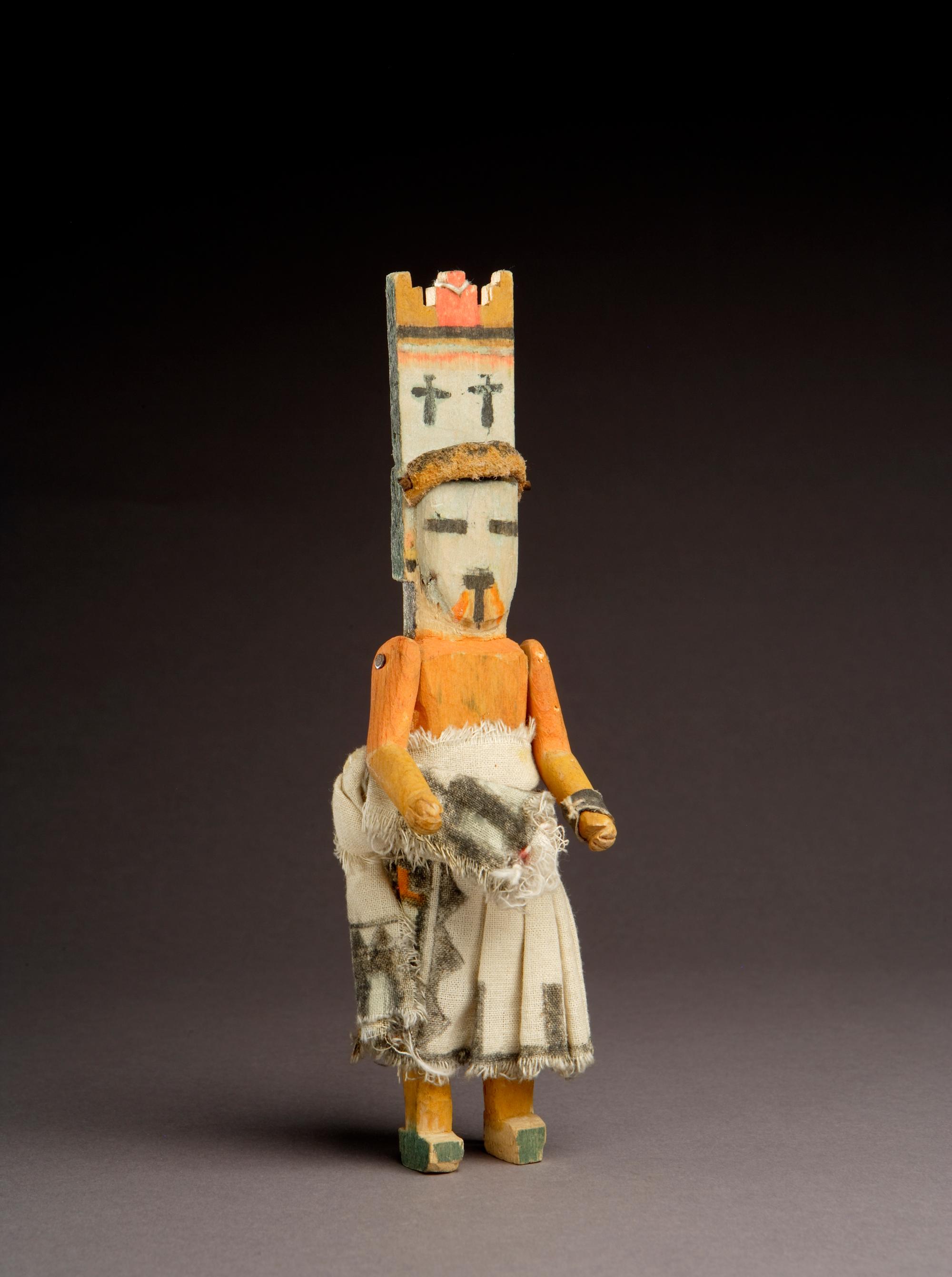
Photograph by Addison Doty. Copyright 2009 School for Advanced Research.
Thlam Hak Du kokko we'ha | Tablita on Head kokko figure
Date: before 1965
Artist or Maker: Unknown
Dimensions:
Overall: 22.9 cm (9 in.)
Medium: wood | paints | cotton | leather | metal, iron
Credit Line: Gift of Elizabeth S. Sergeant, 1965.
Place Made:
Zuni Pueblo, McKinley County, New Mexico, Southwest, United States, North America
Object Number: IAF.C330
Not on view
Tribal Collection Review RemarksJim Enote and Octavius Seowtewa during collection review visit April 6 and 7, 2009 (Events Record “Collection Review: Zuni Tribe, Review 1”): Thlam Hak Du is part of the Mixed Dance Group and the Helili group. Another version of this kokko is IAF.C4. Its name translates roughly to "Tablita on top of his head."
ADDITIONAL INFORMATION: Jim Enote and Octavius Seowtewa during collection review visit April 10 and 11, 2014 (Events Record “Collection Review: Zuni Tribe, Review 13”): This kokko is carved from wood, probably pine. The head and face are painted turquoise blue. It has painted black eyes and a black mouth. There are yellow and orange vertical stripes beneath the mouth. There is a strip of leather, similar to the shape of a crown, pinned to the top of the face with small finishing nails. It’s painted mostly yellow, with a jagged stripe of black at the top. Above the crown is a tablita that is painted turquoise blue with red and yellow stepped clouds at the top. Two black dragonflies are painted on the front, and tadpoles are painted on the back. On the back, it has painted black hair that extends down to the middle of the shoulders.
The torso and upper arms are painted orange. The forearms are yellow. The arms are articulated at the shoulders and attached to the body with a nail through each shoulder. The left arm has a black leather bow guard at the wrist.
The figure wears a kilt made from white cotton cloth with embroidery designs painted onto it. A white cotton cloth sash is tied over top of the kilt, also painted to indicate embroidery designs.
The figure’s legs are painted yellow and it has painted green moccasins.
There are several pieces missing or are different from the kokko’s outfit as compared to what the dancer would wear. It’s missing a turquoise necklace and a bandolier strap and pouch. It’s not wearing a fox pelt. There should be a piece of yarn and a bracelet on the right wrist. It should be holding a bundle of bear grass in each hand. It’s missing the bells it should wear on the backs of its legs.
In Collection(s)
The Indian Arts Research Center, in collaboration with Native American community scholars, strives to present accurate collections records. Records may be updated as new information becomes available and is reviewed with the Native American community having cultural affinity to particular items. Please write to iarc@sarsf.org if you have questions or concerns related to the documentation.
